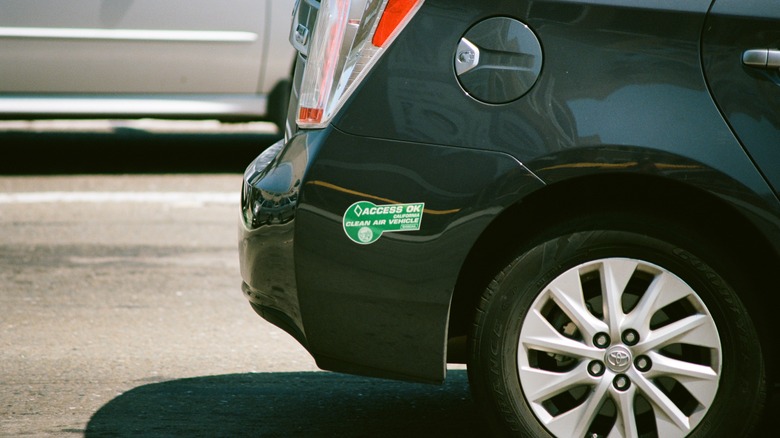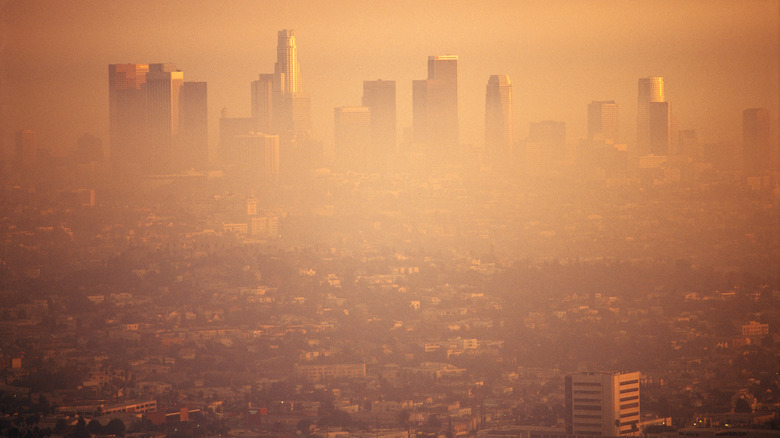As newly minted Tesla owner/spokesperson and President of the United States Donald Trump looks to cancel legislation intended to preserve the environment, it seems like California’s HOV lane exemption for electric and plug-in vehicles is next on the chopping block. We covered just about everything there is to know about HOV lanes earlier this month, but as it pertains to this topic, one function of HOV lanes is that they encourage road goers to carpool to decrease the number of tailpipes that belch out Earth-warming emissions. California currently allows owners of Clean Air Vehicles to apply for special decals that allow drivers to use the HOV lane regardless of vehicle occupancy, thanks to their decreased or eliminated emissions. The state issued 194,486 Clean Air Vehicle exemptions in 2024, a 52-percent increase in the number issued in 2023, but the current program is set to expire on September 30, and prospects of an extension look grim.
The 1998 Transportation Equity Act for the 21st Century allowed states to issue these permits, and California instituted its program the following year in 1999. Qualifications for these decals have become stricter over the years. Originally any sort of hybrid qualified — you’ll still see second-gen Priuses driving around with their original stickers in California — but currently, qualifying vehicles must be fully electric, hydrogen-fuel cell, a plug-in hybrid that meets certain conditions (mainly EV range) or compressed natural gas vehicles that meet certain conditions. Automotive News reports,
In 2024, the state’s Department of Motor Vehicles issued 194,486 stickers allowing cars to use the HOV lane with single occupancy through the Clean Air Vehicle decal program. That’s a 52 percent increase from 2023’s 128,122 decals.
The popularity of the program paradoxically undermines its efficiency. As more vehicles are able to use the HOV lane, it becomes more crowded, eroding the incentive for both clean-air vehicle drivers and those making a concerted effort to carpool.
“You’re going to reach some point where you’ve exhausted that excess capacity,” said John Swanton, an air pollution specialist with the California Air Resource Board’s communications office. “We’re not at the point where, no matter what we do, it’s totally exhausted, but the challenge to our legislature is how to keep this a meaningful incentive.”
CARB says it won’t be a deal-breaker
Swanton told Automotive News that the impact of discontinuing the program “is not going to be a deal-breaker,” since the number of people buying qualifying vehicles to take advantage of the carpool incentive is small nowadays. On the flip side, California Republican State Assemblymember Greg Wallis said it’s a “key incentive” for many Californian car shoppers.
Wallis authored a bill that would extend the state’s Clean Air Vehicle decal initiative through Jan. 1, 2027, but it is currently pending extended federal authorization. That federal authorization is likely going to be very challenging for Republican Assemblymember Wallis’ bill. The Republican-led Congress has introduced a bill to eliminate the individual $7,500 EV tax credit, and both Trump and his pick to run the EPA Lee Zeldin have been quite vocal about their intentions to gut environmental protections, so hope for the revival of the decal initiative is waning.
According to the California Energy Commission, California had over 1.6 million EVs on its roads at the end of 2024, not including plug-in-hybrid or hydrogen fuel-cell vehicles. The impact of losing the Clean Air Vehicle initiative could have been more devastating to widespread EV adoption in years past, but hopefully the impact is minimal should Wallis’ proposed program extension get shot down.



